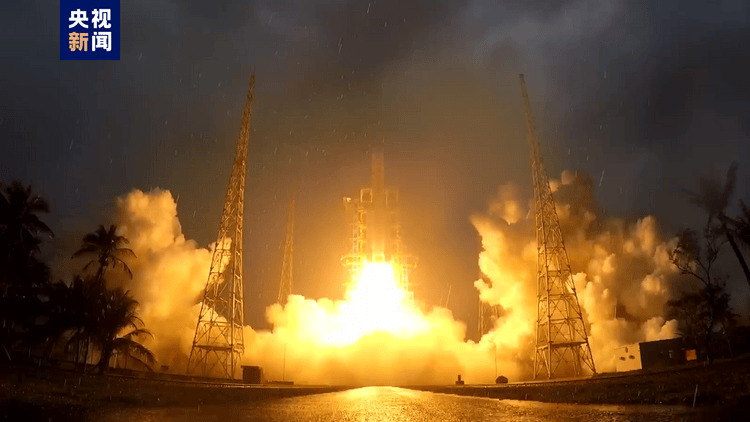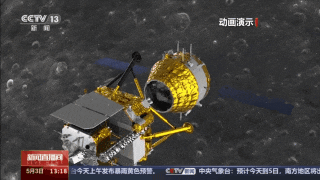At 17:27:19 on May 3rd, the Long March 5B carrier rocket carrying the Chang’e 6 lunar probe ignited and launched from the Wenchang Space Launch Site in China.
This is the second launch of the Long March 5B carrier rocket for the lunar exploration project, which will transport the Chang’e 6 lunar probe to the Earth-Moon transfer orbit to carry out the task of sampling and returning from the lunar far side.

Highlights of the News
Chang’e 6 Lunar Far Side Business Trip Itinerary
↓↓↓
Originally a backup for the Chang’e 5 mission, Chang’e 6 has been given a new mission after the success of the Chang’e 5 mission. It will travel to the South Pole-Aitken Basin on the far side of the moon to conduct topographic exploration and geological background surveys, aiming to discover and collect lunar samples of different regions and ages to bring back to Earth. This will also mark the first time humans have collected samples from the lunar far side. From rocket launch to Chang’e 6 returning lunar samples to Earth, the entire process will take more than 50 days.

Hu Zhenyu, the overall launch site engineering technical team leader for the Chang’e 6 mission, introduced that the Chang’e 6 mission will go through 11 flight phases, namely:
- Launch orbit insertion phase, Earth-Moon transfer phase, near-moon braking phase, circumlunar flight phase, landing descent phase, lunar surface operation phase, lunar surface ascent phase, rendezvous docking and sample transfer phase, circumlunar waiting phase, lunar-Earth transfer phase, and re-entry recovery phase.
During this process, there will also be multiple separations and combinations of the four components of the probe: ascender, lander, returner, and orbiter.
Chang’e 6 can be described as interlocking and critical at every step.

After today’s (May 3) launch of the Chang’e 6 mission, after more than 2000 seconds of flight, the rocket will place Chang’e 6 into the designated orbit and complete the separation of the spacecraft. Chang’e 6 will then head towards the moon. The journey to the moon will take about 5 days. When it is close to the moon, Chang’e 6 will brake to be captured by the moon and enter lunar orbit.

During the circumlunar phase, Chang’e 6 will spend about 20 days adjusting its position to prepare for landing.
Once everything is ready, Chang’e 6 will begin its descent to the moon, and spend 48 hours working on the lunar surface to complete the lunar sample collection. After sampling is completed, it will perform lunar surface ascent, circumlunar orbit rendezvous, and docking work. During this period, Chang’e 6 will also conduct various scientific investigations in lunar orbit.

Hu Zhenyu explained that Chang’e 6 carries four international payloads:
- A helium detection instrument from France, which will conduct in-situ detection of helium isotopes on the lunar surface.
- A lunar surface negative ion analyzer from the European Space Agency, which will detect negative ions on the lunar surface and study the interaction mechanism between plasma and the lunar surface.
- A cube satellite from Pakistan, which will conduct imaging tasks in orbit.
- A laser angle reflector from Italy, which serves as an absolute control point on the lunar far side and can conduct joint ranging and positioning research with other lunar exploration missions.

After completing all the tasks, Chang’e 6 will begin its journey back home. After about 5 days of flight, it will re-enter the atmosphere and return to the Siziwang Banner landing site. The entire lunar far side business trip will take more than 50 days.
Salute to the dream-chasing Chinese space endeavor!
Source: Xinwen Lianbo, CCTV News
Editor: Lei Bin